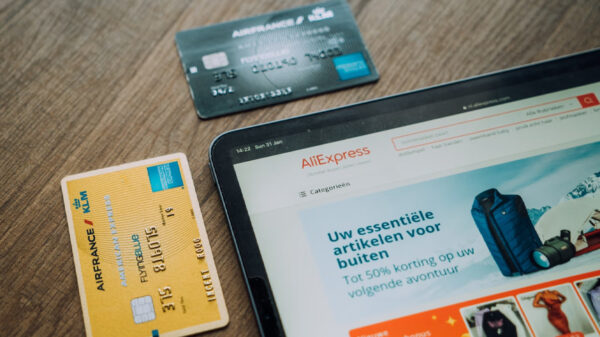By Martha Aguila Borja
General Manager, Wirecard Philippines
We’ve come a long way in the world of travel. Previously it was something few could afford, between expensive flights or train rides that brought us to places that most only dreamt of. Fast forward to today, travel has become an achievable reality for many people – fueled by emerging affluence and armed with growing disposable incomes.
Despite the reduction in prices and ‘affordability’ – travel is and continues to be somewhat of a luxury both before and now. Because of the costs involved, travelers scrutinize each and every payment they have to make, and the experiences that lead them to the actual act of payment. Their expectations have increased as their options and interactions have increased exponentially – from finding inspiration for the next holiday destination to booking, checking in, making in-flight purchases and ordering a taxi upon arrival etc. They want to negotiate these experiences in a seamless way and are looking for simple and pleasant shopping experiences and that includes payment. But have payments evolved fast enough to meet the needs of these savvy travelers?
Digital payments – the new norm
While cash likely will always be king, digital forms of payments are fast becoming the main option travelers tap into today. From credit cards, bank transfers to smartphone payments and frequent-flyer miles, travelers today are surrounded by an ever-expanding choice of their payment modes.
In fact, e-payments have emerged as the leading payment method in the Asia Pacific region when it comes to e-Commerce transactions. This is largely driven by the Asian countries and governments moving towards becoming cashless economies – as they implement new initiatives to drive their respective Smart Nation agendas. In China, WeChat and Alipay are increasingly adopted by time-pressed consumers for their convenience and hassle-free benefits.
Closer to home, a Visa study found that Filipinos are increasingly favoring e-payments, with 57 percent of Filipinos preferring electronic payments as opposed to cash — up from 46 percent back in 2015. In addition, 49 percent of Filipinos have more cards in their wallets presently, as compared to five years ago, while 29 percent carry less cash with them .
The explosion of payment options has concurrently led to increased challenges for the travel industry. Not only must businesses contend with intense competition from new players, they have to consider the increased passenger demands and expectations to offer integrated and seamless purchase experiences. The message is clear for travel businesses that want to emerge as leaders and survive in the new digital economy, integrate new payment options and explore innovation as part of the travel purchase journey, or risk dying.
Why Cash is still a preferred payment option – even amongst the more digitally inclined
It is clear that travel is a hugely popular activity among Filipinos – a recent study by Mastercard estimated 3.4 million outbound travel trips from the Philippines in 2016 alone and has forecasted the number of trips to grow by an average of 4.4 percent annually — reaching an estimated of 4.3 million trips by 2021 .
Despite Filipinos becoming more familiar and savvy with digital payments, many still tend to prefer using cash during their overseas travel so as to avoid paying higher fees incurred by currency conversions, processing and administrative charges. The result? Most end up having to deal with large amounts of unused foreign currencies, which they are likely to spend on things they do not need to get rid of them.
Across the globe, there are local differences in payment type preferences. For instance, in Germany, for example, direct debit remains popular, while in Asia, Alipay and WeChat Pay are popular. Travelers are faced with an increasingly fragmented payments landscape where some cards are more widely accepted around the world than others.
Credit card fraud is another primary concern for travelers and credit card companies. A Phocuswright study found that the classic credit card is by far the most widespread payment method, as it is accepted by 99 percent of airlines for direct bookings – but the risk of fraud is seen as above average at 27 percent .
As payments evolve, companies need to ensure that they provide a balanced variety of cost-efficient payment options for their customers whilst protecting themselves against fraud and non-payment at the same time.
Towards better cross-border payments
The good news is that payment innovation has evolved to meet the challenges faced by consumers and companies in the travel industry. Businesses are exploring options that help to ease some of the challenges mentioned earlier – specifically to help travelers who want a more convenient and cost-effective way of getting foreign currency. For example, RHB Bank Singapore launched a digital multi-currency card that enables customers to make purchases in local currency when overseas. The RHB TravelFX strives to revolutionize the way people travel and exchange for foreign currencies, by providing competitive rates and convenience .
Multi-currency cards are a safe and smart way to carry travel money, as travelers can have access to different currencies via the app – they can enjoy traveling without physical cash or having to deal with leftover currencies. The added layer of security – which allows customers to lock the card when not in use or if they lose the card – also solves one of the customers’ pain points, delivering an enhanced and secure traveling experience.
Recently, the Singtel Group has announced plans to interconnect telco mobile wallets across different ecosystems through an interoperable platform for seamless cross-border payments. This will enable travelers to securely and conveniently pay with their mobile wallets when they travel in Asia .
It is still early days but we’re starting to see more and more innovations in the area of travel and cross-border payments. So far it has been highly encouraging. And while many businesses have awoken to realize they need to be part of the ecosystem and the accelerating digital payments, there’s still much more that has not been explored. Ultimately, this requires a concerted effort among key players in the payments ecosystem to help drive areas such as automation and security so we can make travel a much easier and enjoyable experience for all.















































































































